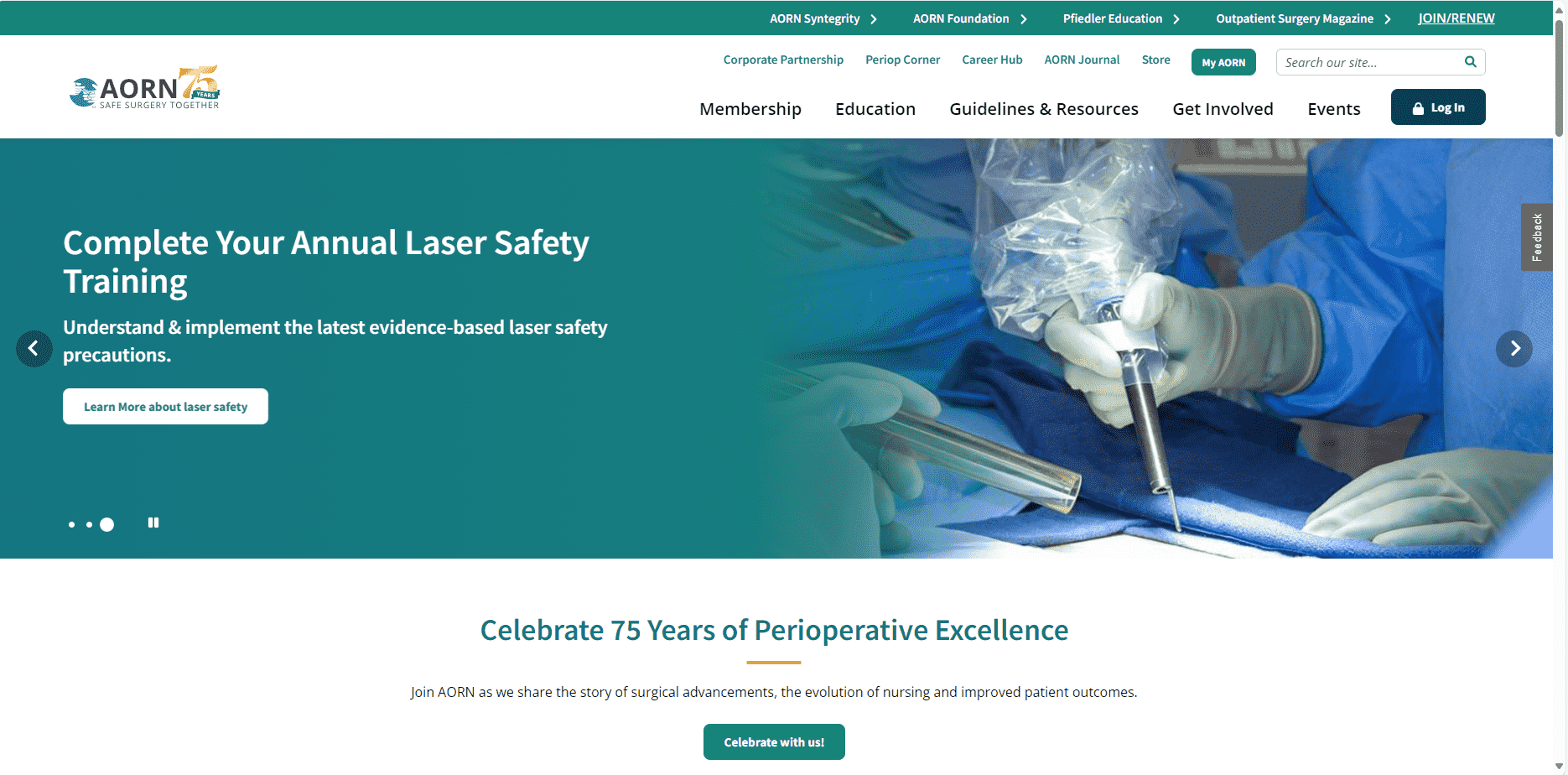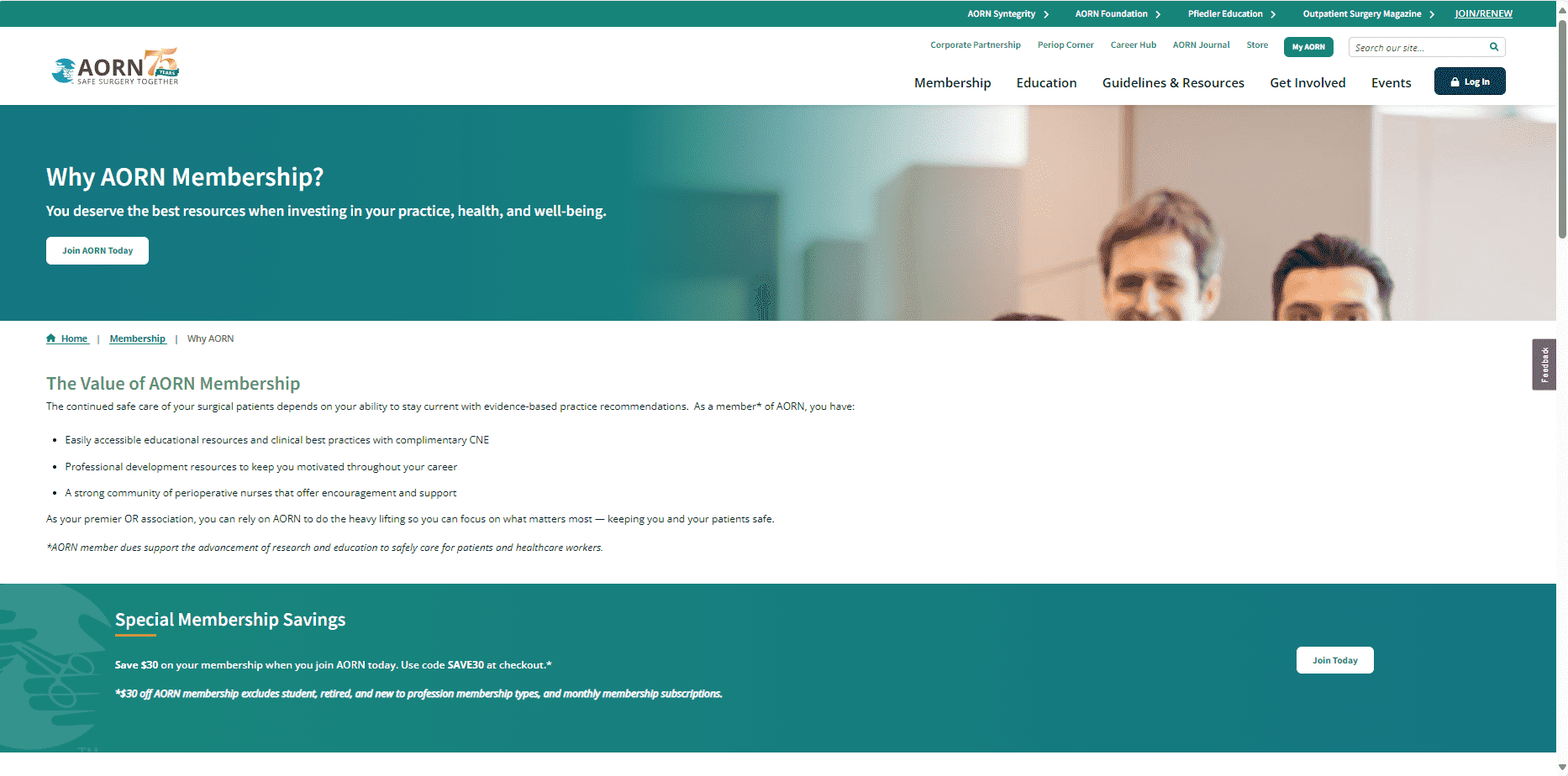AORN
Services we provide:
- Digital strategy
- Website data tracking & analysis
- Website design & development
- Progress Sitefinity implementation
About AORN
AORN is the Association of periOperative Registered Nurses, a community that started in 1949 in order to share best practices for operating room nurses. AORN is celebrating 75 years of being the largest family of organizations dedicated to supporting nurses and surgical teams with over 44,000 members nationwide. AORN shares information with its members through their digital assets, including the website. AORN came to the experts at SilverTech wanting a new digital member experience across all the AORN websites.
The Process
SilverTech’s strategy team reviewed the most current data from AORN and provided recommendations for enhancing components of all the websites for optimized data accuracy and clean data collection going forward. With this project, SilverTech met the challenge of moving seven websites from Sitecore to Sitefinity. Progress Sitefinity was the newly chosen platform for its ease of use, rich functionality and fully customizable features. This project required a design of seven unique styles and brands, creating widgets and content types that would accommodate their content needs for each of the seven entities. This includes the Outpatient Surgery magazine which had more than 12,000 articles. Other challenges with this project included the incorporation of ad space throughout the sites, SSO and member login functionality, custom search, scripted content migration and more.
RESULTS
The Big 3 of Website Development
By: Emma Harris | 10/5/21
The three major components of building a website
For those of us who didn’t study computer science or take a coding class, a website going from a mere idea to being accessible on your phone is mystifying. It is now impossible to operate any kind of consumer-facing business without incorporating some sort of online option. Since digital is the new standard of operating business, it will be beneficial to know the basics of a website so that your organization can make the most of its digital experience.
To be clear, there are many components that go into building a website. However, for those that are new to learning about the trade, there are three major components to understand: front-end development, back-end development, and hosting.
Here’s how they all work together so you can Google “how to know if you have a foot fungus” and find a WebMD article within seconds.
Development
First things first: coding
There are two types of development required for building a website. First, it is important to understand what the “development” part means... code. Code is the programming languages that use commands and variables and such to tell the computers to do something. At its bare bones, each website is just a list of code or instructions, that tells it to do simple things like have a red background or more complex things like go to the database and get all TVs that are larger than 50 inches and between $500 and $700. The people that type in the instructions, or code, are developers.
Front-end development
To dictate the visual part of the website, you’d use front-end development. Front-end developers create code like HTML, CSS, and JavaScript to determine the website’s interactivity and also how colors, images, and text appear. They are the ones that make creative ideas generated by the UI/UX design teams come to life. Additionally, they are responsible for incorporating ADA compliance within the visual elements and making sure your site is structured to get all the SEO-goodness you can. In short, front-end developers make the website look the way you want it to look and interact the way you need it to while being accessible to google and accessibility devices like screen-readers.
Back-end development
Don't worry, this has nothing to do with squats. Back-end development covers the unseen elements of the website. These developers make sure your website functions by building the code that connects the website and data and any other services it needs to talk to. This could be a database, a search provider, or a payment service to process credit cards. If you need an upgrade in security or want to add some eCommerce functionality, back-end development can help with that. So, back-end development is responsible for your website running by creating the code that communicates the actions taken by users on your site, to the server, and back.
Hosting
Finally, web hosting is how your website becomes accessible to other people on the internet via the world wide web. This is accomplished through a web host, or a company that provides the technology needed for a website to be viewed on the internet. Hosts accomplish this through servers (think the “cloud”). All websites live on servers. When an individual types in your website’s domain into their computer, it’s the server that connects your website to their browser. There are many options for web hosting services depending on need. SilverTech specialized in AWS and Azure. To ensure companies don’t have the same website URL and that their domains are secure, each website must register with a server and be approved to be able to be viewable on the web.
When dealing with traffic, scalability, domain names, and URLs, it’s the hosting services that handles all this.
In summary, front-end development presents the website how you want it to look. Back-end development makes sure your website works and hosting services make sure your website shows up when people type in your URL. We hope you enjoyed this CliffsNotes version of website development.
It is important to note that we have left out some parts of the web-building process. Making a customer-centered website with an enhanced digital experience requires strategy in addition to the “big three.” To build future-proofed website, you’d enlist strategists to help you create a digital roadmap, include testing of users of your website, and use UI/UX designers to decide the layout based on these findings.
Ready to build a new website or have questions about how you can improve your current site? Contact us to schedule to talk through our pain points or schedule an audit to see how we can help.
Categories:
Web Development



